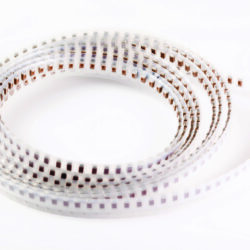Obsolescence: not the end of the world
Electronic Component life-cycles—the time between market introduction and formal end-of-life—are shortening. A large part of the world’s semiconductor demand is driven by consumer electronics, and this market typically has shorter and shorter product lives. Component obsolescence is affecting more companies, more regularly than ever before. Manufacturers in the automotive, industrial,…
Size matters: why small chips can offer big savings
Technical director at Anglia Components, David Pearson, explains why specifying smaller chip passives can eliminate future obsolescence worries, saving both time and money down the line. It is an inescapable reality that the industrial distribution market for chip passives represents a very small proportion of global consumption. Most chip passives…
Obsolescence planning: the best medicine for device longevity
Director of industrial automation parts supplier, EU Automation, Jonathan Wilkins, explains why planning for obsolescence in medical devices is vital, as well as how this short-term cost can result in long-term gains. Out with the old and in with the new. For most of us, this is just another cliché…



